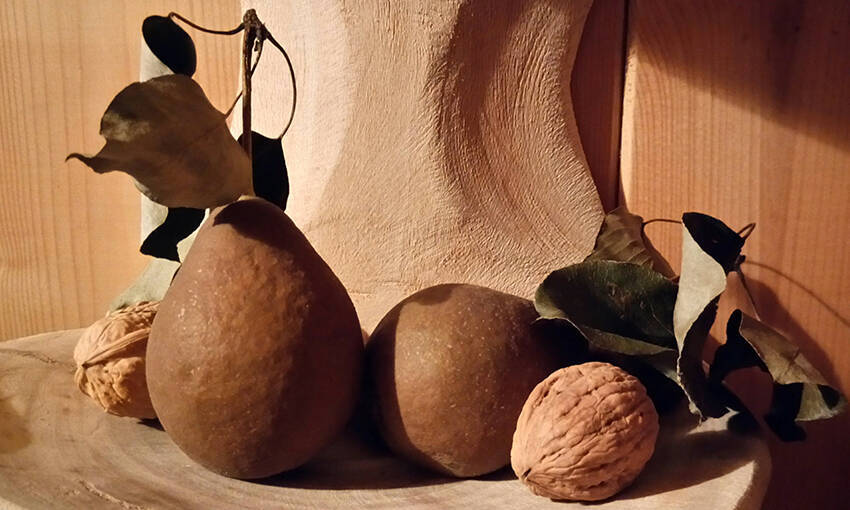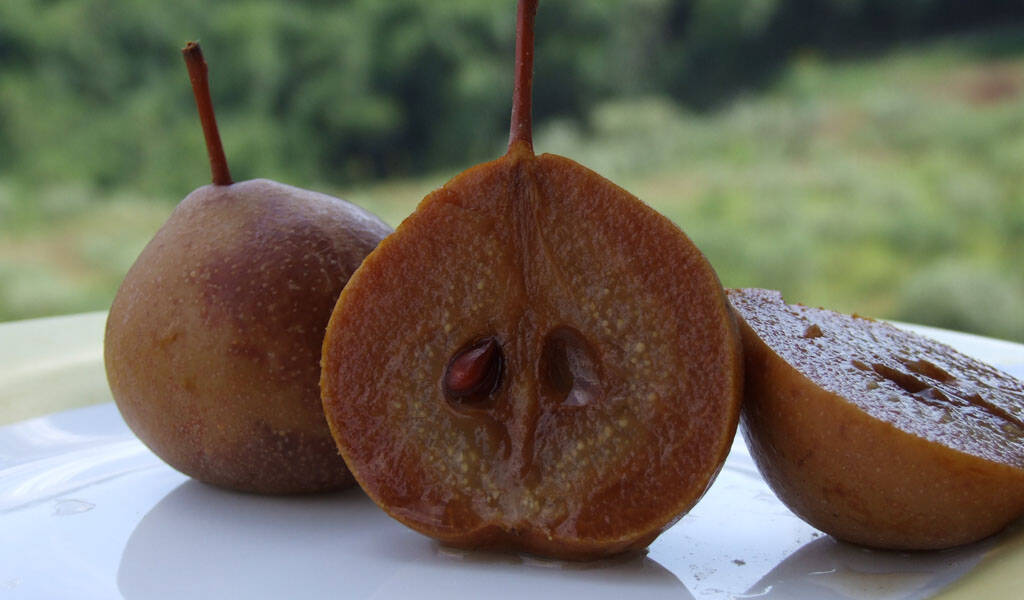


The Pero Misso is a delicacy in the panorama of Italian fruit growing,particularly rooted in the Valpantena region and the surrounding hilly areas.
This native variety of pear, also known as "Pero Nasuto" or "Missaoro", embodies centuries of agricultural history and a deep connection with the territory.
When harvested, the pears have a green background color with red shades and white, slightly grainy pulp. To be consumed, however, this fruit must first undergo a marrowing process (like persimmons, quinces, jujubes and other fruits). The fruits, harvested unripe, are placed in a dry, dark place for about a month, until they reach the right ripeness. In this way, the astringent effect on the palate caused by the high content of tannins which, during harvesting, decreases and the sugar content increases. By measuring temperatures and harvesting times, the fruits can be preserved for up to four months, distributing their consumption over time. After overripening, the skin takes on a dark brown color, like the pulp, which however remains firm.

What makes Pero Misso even more special is its connection to local traditions and its cultural importance in the Valpantena region. For centuries, it has been a staple in the diet and culinary culture of local communities, used in a variety of traditional recipes: excellent desserts, jams, juices, spirits, cider.
Despite its considerable local popularity, the Misso pear has risked oblivion due to changes in food tastes and modern agricultural practices. However, thanks to the efforts of local producers and the attention of the Department of Agronomy and Plant Production of the Faculty of Agriculture of the University of Padua and the Experimental Institute of Fruit Culture of Verona, this variety of pear has been preserved and celebrated as a true treasure of biodiversity as a Slow Food Presidium.
Today, the Misso pear represents not only a symbol of local identity, but also an example of how the valorization of native varieties can contribute to the conservation of biological diversity and the promotion of sustainable agricultural practices.
Anyone lucky enough to taste the Pero Misso can enjoy not only its delicious flavor, but also a portion of the history and culture of Valpantena, contained in every bite of this extraordinary pear.
